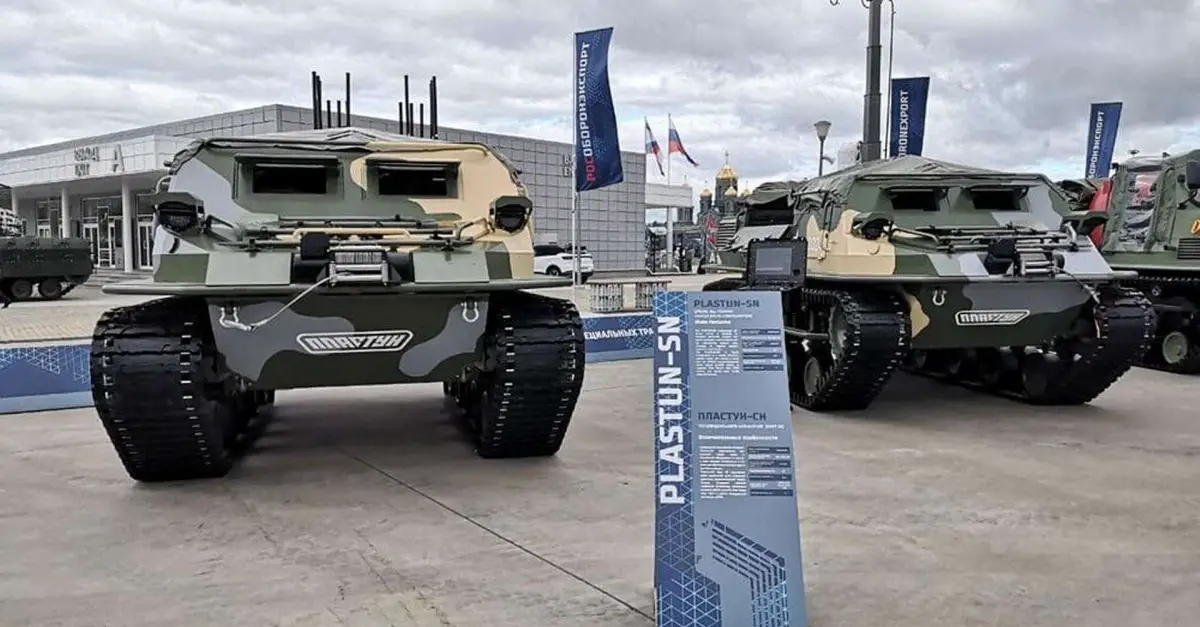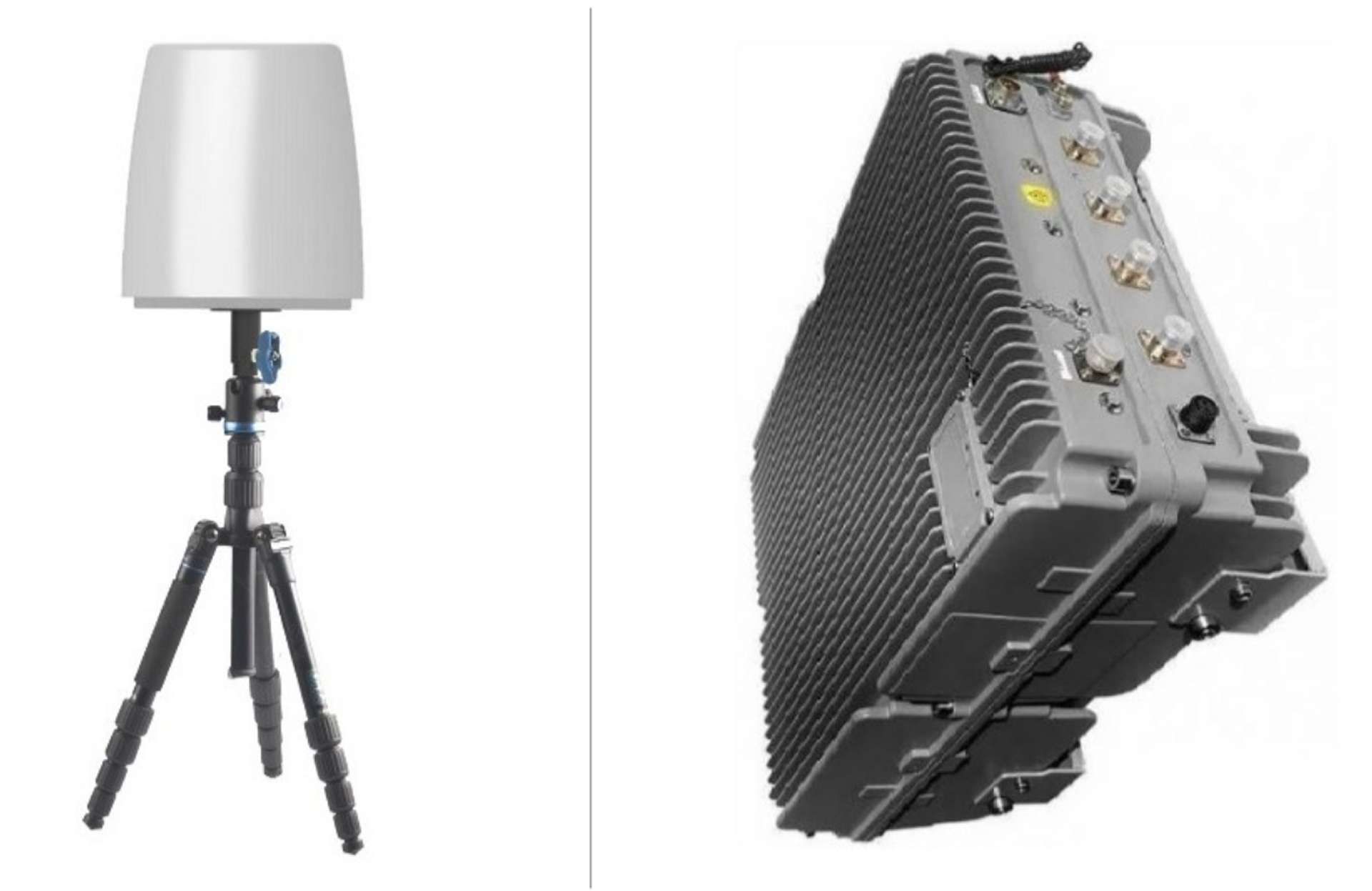Breaking News
Russia unveils new Plastun-SN electronic warfare vehicle at Army-2024 to counter FPV drones.
At the Army-2024 exhibition, Russia's Rosoboronexport introduced a new mobile electronic warfare (EW) system, based on the Plastun-SN tracked armored vehicle. This vehicle is equipped with the Shield electronic warfare system, designed to suppress electronic signals from first-person view (FPV) drones and other unmanned aerial vehicles (UAVs). In addition to its EW capabilities, the Plastun-SN can transport either eight fully equipped personnel or four operators for the EW systems.
Follow Army Recognition on Google News at this link

The Plastun-SN is a military variant of the civilian Plastun all-terrain vehicle, with the "SN" designation indicating its "Special Purpose" capabilities. (Picture source: Russian social media)
As reported in October 2023, the Russian Ministry of Defense has taken delivery of 14 Plastun-SN vehicles, indicating the vehicle's operational readiness and potential importance within the Russian Armed Forces. These vehicles, which were first revealed at the Army-2023 exhibition in Moscow, are produced in Novosibirsk and have been tailored to meet military requirements. A total of at least 50 of these vehicles have been ordered under a contract signed by the Ministry of Defense.
The Plastun-SN is a military variant of the civilian Plastun all-terrain vehicle, with the "SN" designation indicating its "Special Purpose" capabilities. This variant is designed for various military roles, including medical evacuation, reconnaissance, and as a self-propelled mortar platform. At the Army-2023 forum, two specific configurations of the Plastun-SN were displayed: one equipped with an 82 mm mortar for artillery support and another with a telescopic mast and observation devices for reconnaissance. The vehicle's performance was tested at the Alabino training ground, showcasing its adaptability.
In terms of protection, the Plastun-SN is equipped with combined armor capable of withstanding bullets ranging from 9x19 mm to 7.62x39 mm. However, its open design, protected only by a waterproof canopy and a removable frame, makes it vulnerable to certain threats, such as drone strikes or shrapnel from enemy fire. The vehicle features a patented all-season track that measures 500 mm in width, enhancing its mobility across various terrains.

The OPD-712 "Shield" system combines the OD-712 "Lovets" detector and the PD-704 "Perimeter" suppressor, working together to automatically combat UAVs. (Picture source: Protection System)
The vehicle’s 1.6-liter Lada petrol engine generates 106 horsepower, enabling it to reach a top speed of 50 km/h, with an optimal operating speed of 30 km/h. The Plastun-SN is also amphibious, capable of crossing water obstacles, and features a winch that allows it to climb steep slopes, demonstrating its capability in various operational environments. Weighing 3,800 kg, the vehicle can overcome obstacles such as ditches, trenches, and inclines.
The vehicle's electronic warfare capabilities are centered around what is possibly the OPD-712 "Shield" system from the Russian company Protection System. This system is designed to detect and suppress drones by interfering with the communication between the drone and its controller. The OPD-712 "Shield" system combines the OD-712 "Lovets" detector and the PD-704 "Perimeter" suppressor, working together to automatically combat UAVs. The system has a detection range of up to 5 kilometers and a suppression range of up to 3 kilometers, capable of handling up to 30 UAVs simultaneously. It can operate both manually and autonomously and is built to function under challenging environmental conditions, in compliance with Russian industrial and military standards.
The OPD-712 "Shield" system provides broad-spectrum suppression across various frequency ranges, ensuring that UAVs lose control and their satellite navigation is disrupted, preventing them from returning to their starting points. The system is designed to integrate additional suppressors if necessary, and it can function as part of a broader network of detection and suppression systems.


























